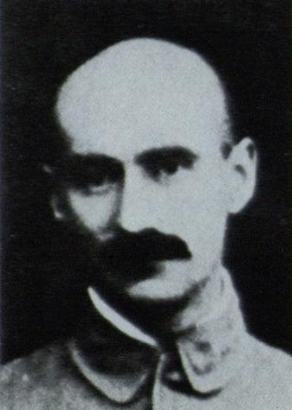
Pierre Antoine Delalande was a French naturalist, taxidermist, explorer and painter.
William Robert Ogilvie-Grant was a Scottish ornithologist.
José Alberto de Oliveira Anchieta was a 19th-century Portuguese explorer and naturalist who, between 1866 and 1897, travelled extensively in Portuguese Angola, Africa, collecting animals and plants. His specimens from Angola and Mozambique were sent out to Portugal, where they were later examined by several zoologists and botanists, chiefly among them J.V. Barboza du Bocage.

Adolfo Lutz was a Brazilian physician, father of tropical medicine and medical zoology in Brazil, and a pioneer epidemiologist and researcher in infectious diseases.
Karl Hoffmann was a German physician and naturalist.
Norman Edouard "Kibe" Hartweg was an American herpetologist, Curator of Herpetology for the Museum of Zoology at the University of Michigan, and president of the American Society of Ichthyologists and Herpetologists. He was a specialist in the taxonomy and distribution of turtles, and is honored by having a subspecies of turtle named after him: the western spiny softshell turtle, Apalone spinifera hartwegi. He is also credited with having described several new species, including the Big Bend slider, Trachemys gaigeae, the Oaxacan patchnose snake, Salvadora intermedia, and Dunn's hognose pit viper, Porthidium dunni.
Charles Thomas Brues was an American entomologist.

Abronia smithi is a species of lizard in the family Anguidae. Known by the common name Smith's arboreal alligator lizard, the species is endemic to the state of Chiapas in Mexico.

Alexander Grant Ruthven was a herpetologist, zoologist and the President of the University of Michigan from 1929 to 1951.
William Charles Schroeder (1895–1977) was an American ichthyologist. He was born on Staten Island, New York. He, along with his lifelong colleague Henry Bryant Bigelow, made substantial contributions to the knowledge of the fish fauna of the western North Atlantic. The two described 42 new species of jawless fishes and cartilaginous fishes, and authored several seminal publications, including Fishes of the Western North Atlantic and Fishes of the Gulf of Maine.
Johann Andreas Schnabl was born a Pole of German descent, and was an entomologist specializing in Diptera. His family moved from Dresden to Warsaw in the late 18th century, hence the German heritage.

Rudolf Grauer was an Austrian explorer and zoologist.
Nathan Everett Pearson (1895–1982) was an American ichthyologist. He was a student of Carl H. Eigenmann at Indiana University. He traveled on the Mulford Expedition to the Amazon. He collected 6,000 specimens and discovered 25 new species.

Avery Judd Skilton M.D. was an American physician and naturalist who practiced medicine in Troy, New York, for 30 years. He was also a curator at the Troy Lyceum of Natural History, studying mineralogy, geology, botany, conchology, and paleontology, and in his later years pursued genealogy.
Euspondylus simonsii, known commonly as Simons's sun tegu, is a species of lizard in the family Gymnophthalmidae. The species is endemic to Peru.
Macropholidus ruthveni, known commonly as Ruthven's macropholidus, is a species of lizard in the family Gymnophthalmidae. The species is endemic to northwestern South America.
Proctoporus guentheri, also known commonly as Günther's lightbulb lizard , is a species of lizard in the family Gymnophthalmidae. The species occurs in South America.
Arthur Lennox Butler was a British naturalist. Born in Karachi, he became a curator of a natural history museum in Kuala Lumpur, Malaysia. He later became the superintendent of a game preserve in Sudan before returning to England. He is commemorated in the scientific names of four species of reptile, a bird, and an amphibian.
Perry Oveitt Simons was an American scientific collector. He predominantly worked in the Neotropics.
Mastigodryas heathii, also known commonly as Heath's tropical racer, is a species of snake in the subfamily Colubrinae of the family Colubridae. The species is native to northwestern South America.






